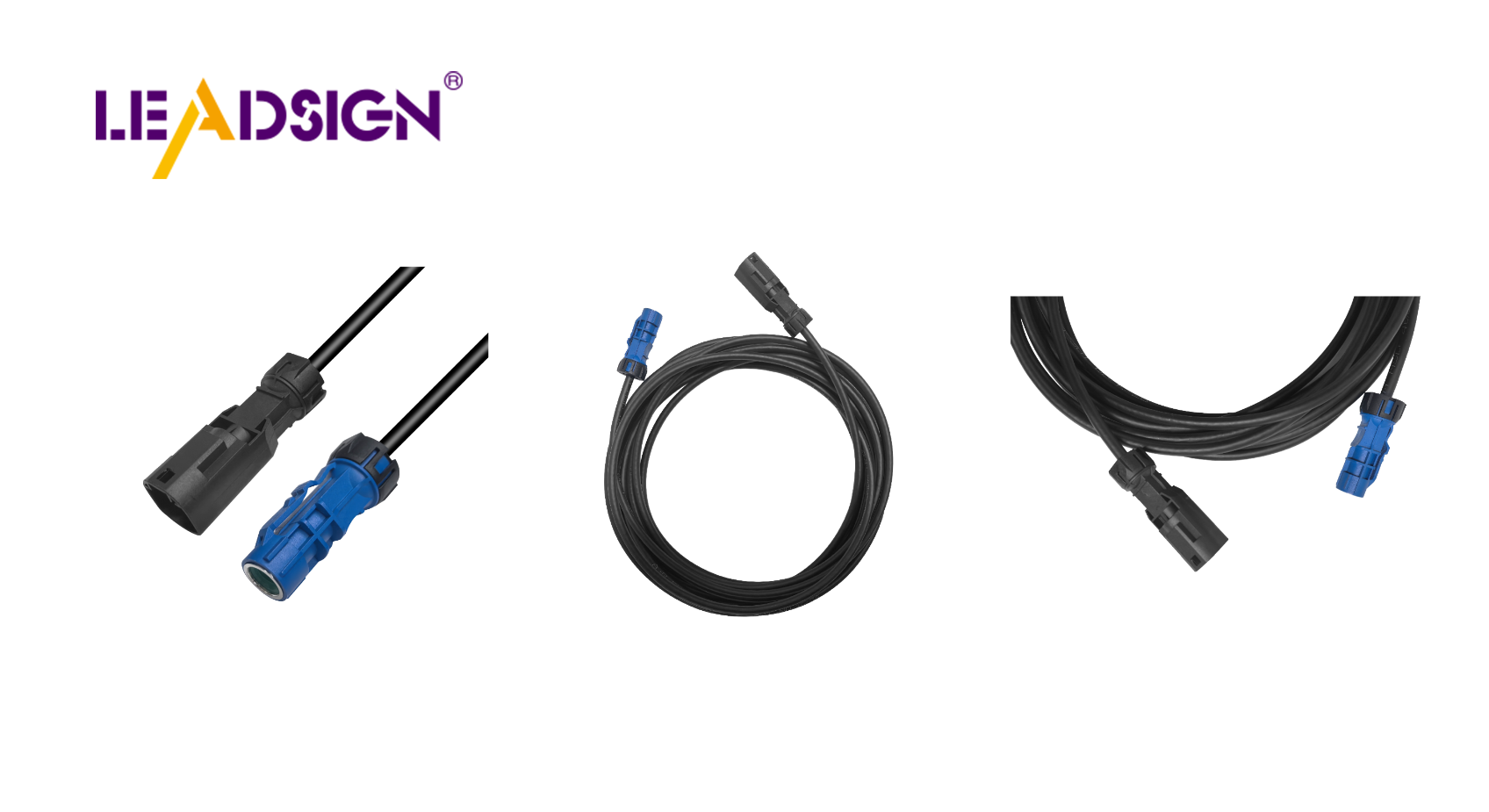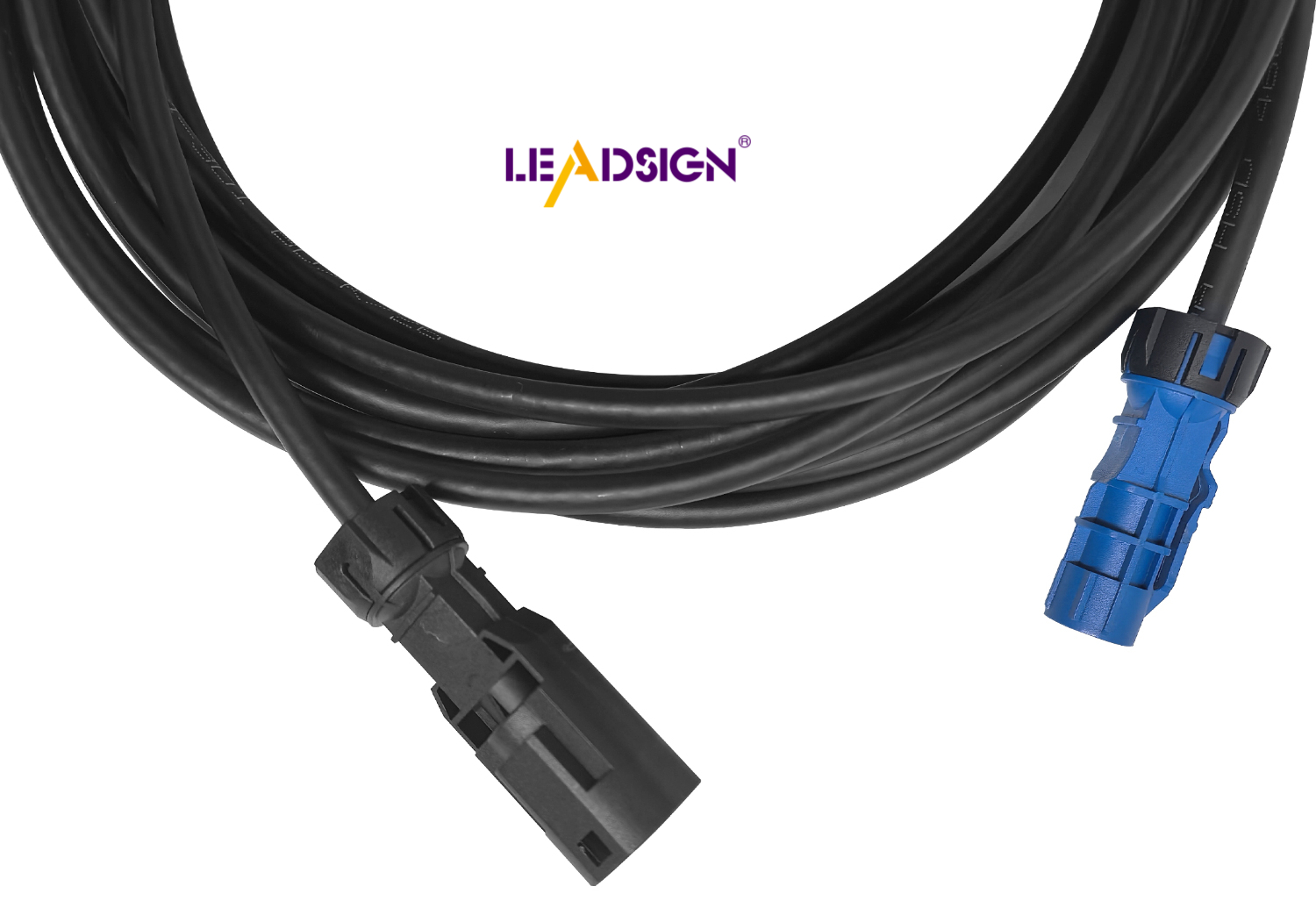Exploring the Role of Automotive Harness Connectors in Vehicle Systems

Auto harness connectors are important for sending power and signals. They help parts of the car communicate and work properly. In the last 10 years, car electrical systems have become more advanced. This is because people want better features and more connectivity. These auto harness connectors handle this complexity, making cars safer and work better.
Key Takeaways
Car harness connectors link parts so they can work together.
Picking the right connectors for power and weather keeps systems safe.
Check and care for connectors often to avoid problems in your car.
The Role of Auto Harness Connectors in Vehicle Systems
Helping vehicle parts communicate smoothly
Auto harness connectors help car parts talk to each other. They link control units, sensors, and actuators to make systems work. For example, they let the engine system talk to fuel or temperature sensors. They also connect navigation, air conditioning, and lights. These connectors stay secure to stop accidental unplugging and keep data flowing. This is very important as car systems become more advanced.
Powering important systems like engines, lights, and entertainment
These connectors power and link key systems in your car. They help engine systems manage fuel and ignition and keep lights working for safety. Entertainment systems also use them to connect music, video, and GPS. Without these connectors, car wiring would fail to work properly. They can send data quickly, which is needed for modern cars with smart features.
Making cars safer, better, and more reliable
Harness connectors make cars safer and more dependable. They keep airbags, brakes, and traction systems working well for your safety. Secure lighting connections stop flickering, and strong engine links prevent problems. New smart connectors can check systems in real-time for better performance. These updates help electric cars and advanced driving systems stay safe and efficient.
Types of Automotive Electrical Connectors and Their Applications

Power connectors: Engine, battery, and high-power systems
Power connectors send electricity to important car parts. They help systems like power windows, lights, and sensors work properly. These connectors also support starting the engine and fuel injectors. You can find them in wires, cables, or circuit boards. They are strong and handle high currents well. This makes them essential for engine and powertrain wire harnesses. Without power connectors, your car’s electrical systems wouldn’t work right.
Signal connectors: Infotainment, communication, and sensor systems
Signal connectors help infotainment and communication systems in cars. They send data between navigation, radios, and sensors. These connectors are small, fast, and resist shaking or interference. They ensure reliable performance even in tough conditions. For example, signal connectors in body wire harnesses link sensors to control units. This keeps your car’s infotainment and communication systems running smoothly.
Specialty connectors: Lighting, safety, and advanced electronics
Specialty connectors are made for specific uses like lights and safety. They include CPA connectors, which stay secure in harsh conditions. Their locks stop accidental unplugging, which is vital for airbags and brakes. Specialty connectors also improve advanced electronics like digital navigation. They are durable and reliable, helping your car stay safe and perform well.
Note: Automotive connectors include multi-pin sealed, terminal, wire-to-board, board-to-board, and wire-to-wire types. Each type has a special job to keep your car’s electrical systems working smoothly.
Group | Description |
|---|---|
A Group | Power connectors for head units, switches, and antennas. |
B Group | Connectors for vehicle speakers. |
C Group | Connectors for specialty peripherals like amplifiers and CD decks. |
D Group | Connectors for satellite navigation systems. |
Knowing about automotive connectors helps you see how they keep your car working well and reliably.
Key Features and Benefits of Automotive Electrical Connectors
Strong and built to handle tough conditions
Car connectors need to work in hard environments. They must handle heat, cold, water, and chemicals like brake fluid. Check for an IP rating to ensure they are protected.
The material used affects how strong they are. Plastic is light and good for normal use. Metal is better for heavy-duty jobs. Gold or silver coatings help keep signals clear by lowering resistance. Locking parts and strain relief stop damage from shaking or movement.
Feature | Description |
|---|---|
Tough Conditions | Handles heat, moisture, and chemicals. Look for IP ratings. |
Mechanical Strength | Resists shaking; includes locks and strain relief. |
Material Choice | Plastic for light use, metal for heavy-duty tasks. |
Signal Quality | Gold or silver coatings keep signals strong and clear. |
Stops wrong connections and keeps systems working
Wrong connections can mess up your car’s systems. Car connectors stop this with smart designs. Different shapes and codes make sure they fit the right port. Locks keep them secure even if the car shakes.
Good methods like crimping or soldering make strong connections. High-quality materials keep signals clear and reduce failures. These features make connectors dependable for your car’s systems.
Factor | Description |
|---|---|
Secure Connections | Locks stop disconnection from shaking. |
Connection Methods | Crimping or soldering keeps signals strong. |
Signal Quality | Good materials lower resistance and prevent signal loss. |
Easy to install, fix, and service
Car connectors are simple to set up and fix. Their design makes assembly quick, saving time and money. They work with many car models, making them versatile.
To install:
Get the wires ready.
Put the wires into the connector.
Lock the connector in place.
Test to make sure it works.
For upkeep, check connectors often for damage. Replace broken ones and clean them to avoid rust. Strong designs make them easier to handle during repairs. These features keep your car’s wiring reliable and efficient.
Tip: Modular designs make assembly easier and reduce mistakes in wiring setups.
Choosing the Right Wire Harness Connectors
Matching connectors to your car's systems
Picking the right wire harness connectors means checking if they fit your car. Think about these factors:
Electrical parameters like current and voltage must match the system. Low resistance helps signals move smoothly.
Environmental conditions like heat, cold, or moisture should guide your choice.
Mechanical factors such as vibration resistance and strong locks are important.
Application-specific requirements include signal strength, shielding, and wire size compatibility.
By checking these points, you can pick connectors that work well and support your car's systems.
Handling tough environments and conditions
Car connectors need to survive in hard conditions. Heat, cold, and water can affect how they work. Look for connectors with high IP ratings to block dust and water.
Big temperature changes can weaken materials. Choose connectors made from strong plastics or metals that handle heat and cold. For wet or chemical-exposed areas, sealed connectors with coatings that stop rust are best. These features help connectors stay reliable even in tough spots.
Checking quality, standards, and trusted brands
Good connectors make cars safer and work better. Look for ones that meet important standards:
Standard/Certification | What It Means |
|---|---|
ISO | Global rules for safety and quality. |
SAE | Rules for car parts by the Society of Automotive Engineers. |
UL | Safety checks by Underwriters Laboratories. |
CSA | Canadian safety checks for electrical items. |
Trusted brands often offer connectors with extras like gold coatings to stop rust and easy-to-fix designs. Picking certified, high-quality connectors ensures your car’s wiring stays dependable for a long time.
Auto harness connectors are key to keeping cars working well. They provide steady links for important systems like engines, airbags, and brakes. This helps avoid safety problems. As cars get smarter, these connectors send data fast and handle tricky electrical setups. Picking the right connectors keeps your car safe, efficient, and future-ready.
FAQ
What do automotive harness connectors do?
These connectors join your car's electrical parts together. They send power and data between things like sensors, engines, and screens. This helps your car work properly.
How can you pick the right connector for your car?
Make sure it fits your car’s systems. Think about power needs, weather conditions, and brands that follow safety rules like ISO or SAE.
Why are fast data connectors needed in today’s cars?
Fast data connectors, like HSD ones, move data quickly. They help with screens, cameras, and smart systems, keeping modern cars running smoothly.
See Also
Why HSD Connectors Are Essential for Automotive Applications
Understanding How Fakra Connectors Benefit Automotive Systems
Fundamentals of HSD Connectors Within Automotive Engineering

